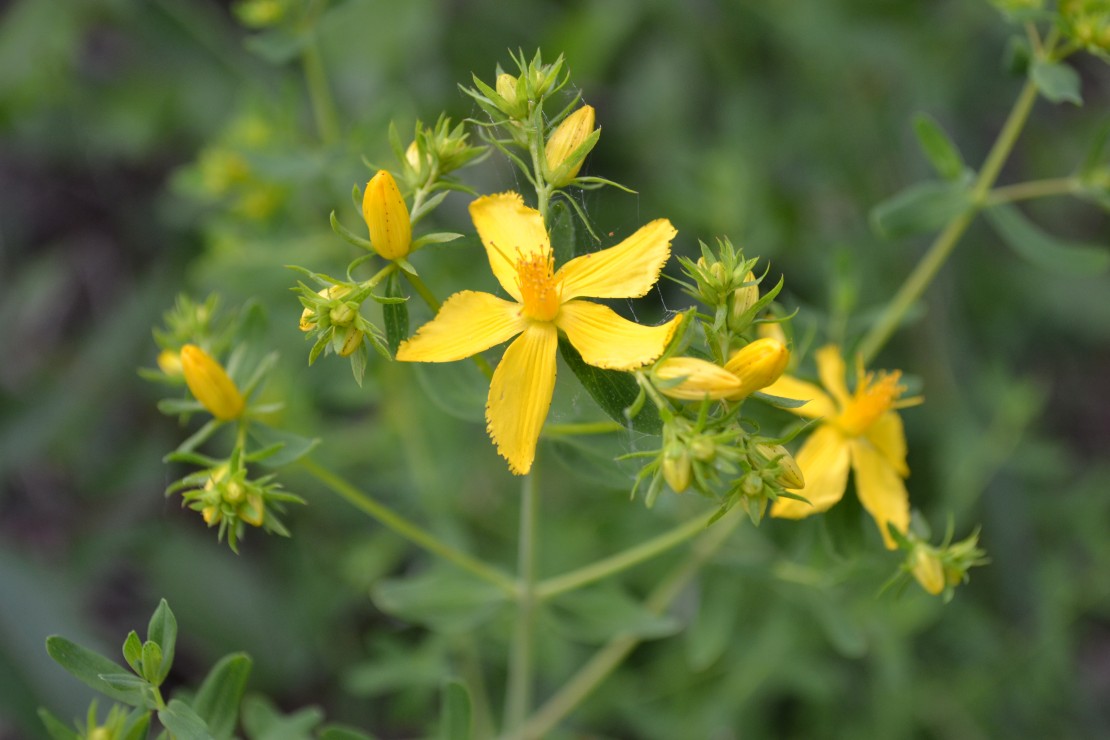
St. John’s Wort in Bloom: How To Identify And Forage St. John’s Wort
St. John’s wort, sometimes known as St. Joan’s wort, (Hypericum perforatum) is one sign that summer has indeed arrived. It typically blooms very near to the summer solstice, which is a useful identifier as to the best time to harvest the aerial parts with their sunny yellow flowers. The harvest season of St. John’s wort is short, lasting from late June to early July.
In the article below, I’ve outlined some tips to help you identify and forage St. John’s wort this summer.
What You Need To Know To Forage St. John’s Wort
To forage St. John’s wort, it is important to know where to look as well as how to identify the plant by its physical characteristics. Once you’ve correctly identified the plant, you can harvest it. When harvesting any plant, ethical harvesting practices are essential. I’d like to share some easy ways to identify St. John’s wort, some tools you’ll want to have with you, and some tips for the ethical harvesting of this summer ephemeral.
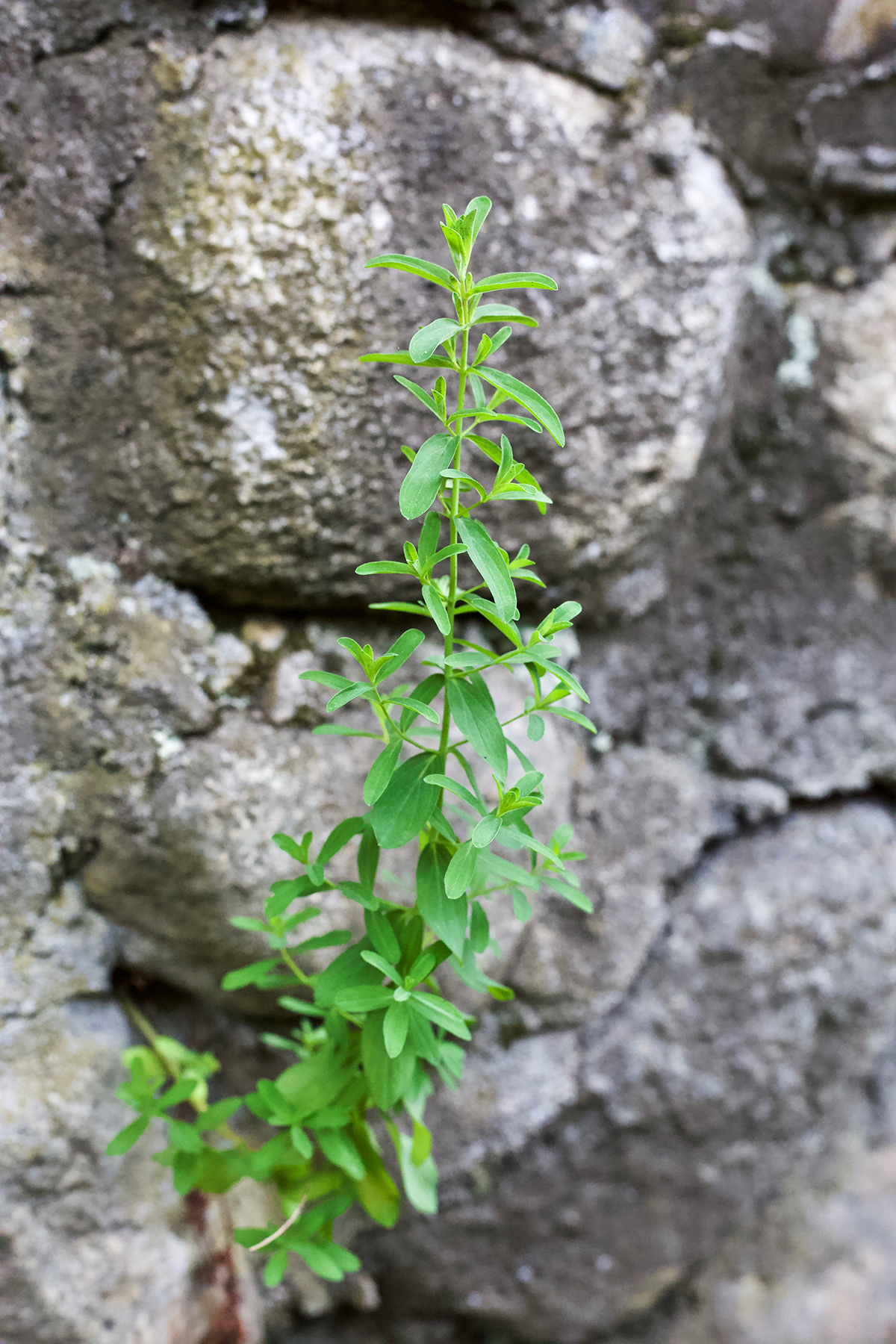
St. John’s Wort Identification
It’s likely that once you successfully identify St. John’s wort, you will have an easy time finding it again. Knowing what to look for, having confidence in your plant identification skills, and using resources as needed is important when learning to identify wild plants.
However, before you are comfortable foraging for St. John’s wort in the wild on your own, I would recommend that you take a botanical key with you into the field. William A. Weber has a useful key that I always bring with me on botanical and foraging adventures called Rocky Mountain Flora. This book, and other keys, give detailed information about altitude, habitat, and other special characteristics of plants. Keys are meant to bring you discernment and confidence about the plant you are learning to identify.
Learn more about our favorite books to help you identify and harvest plants in our post, 5 Foraging Guide Books To Help You Identify & Harvest Plants.
St. John’s Wort Characteristics
St. John’s wort is a perennial that grows around 3 feet tall. It can often be found near meadow drainages, creeks, and foothills. It likes plenty of sun and dry soil. Finding St. John’s wort in cities, in parking lots, and in places where you wouldn’t think much would grow, is a testament to the fortitude of this plant and its ability to come through adversity to be of service.
When foraging for St John’s wort, look for its opposite-patterned leaves and branches. The leaves and sepals are oblong in shape and three times longer than they are wide. The leaves are stalkless, and if held to the sky, light will shine through the small dots. There are many long stamen that come together in three bunches and pop out of the center of the flower. St. John’s wort has a reddish, woody stem base.
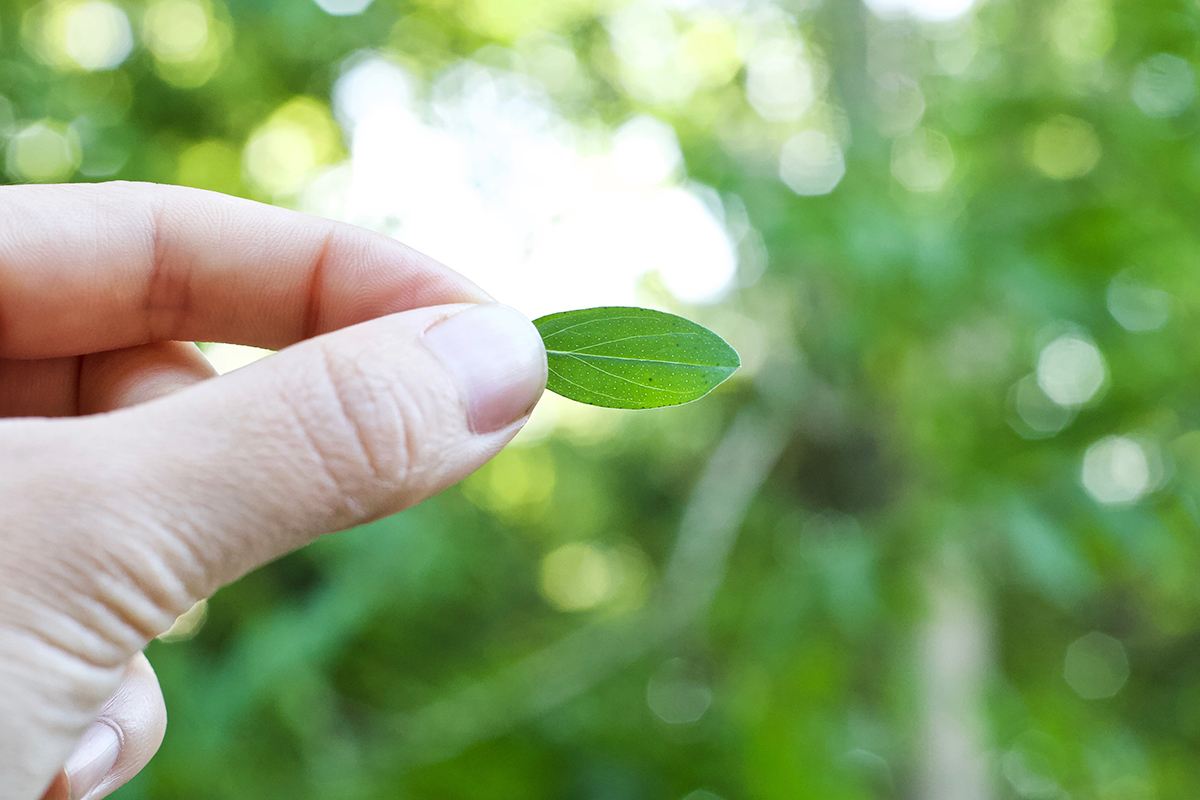
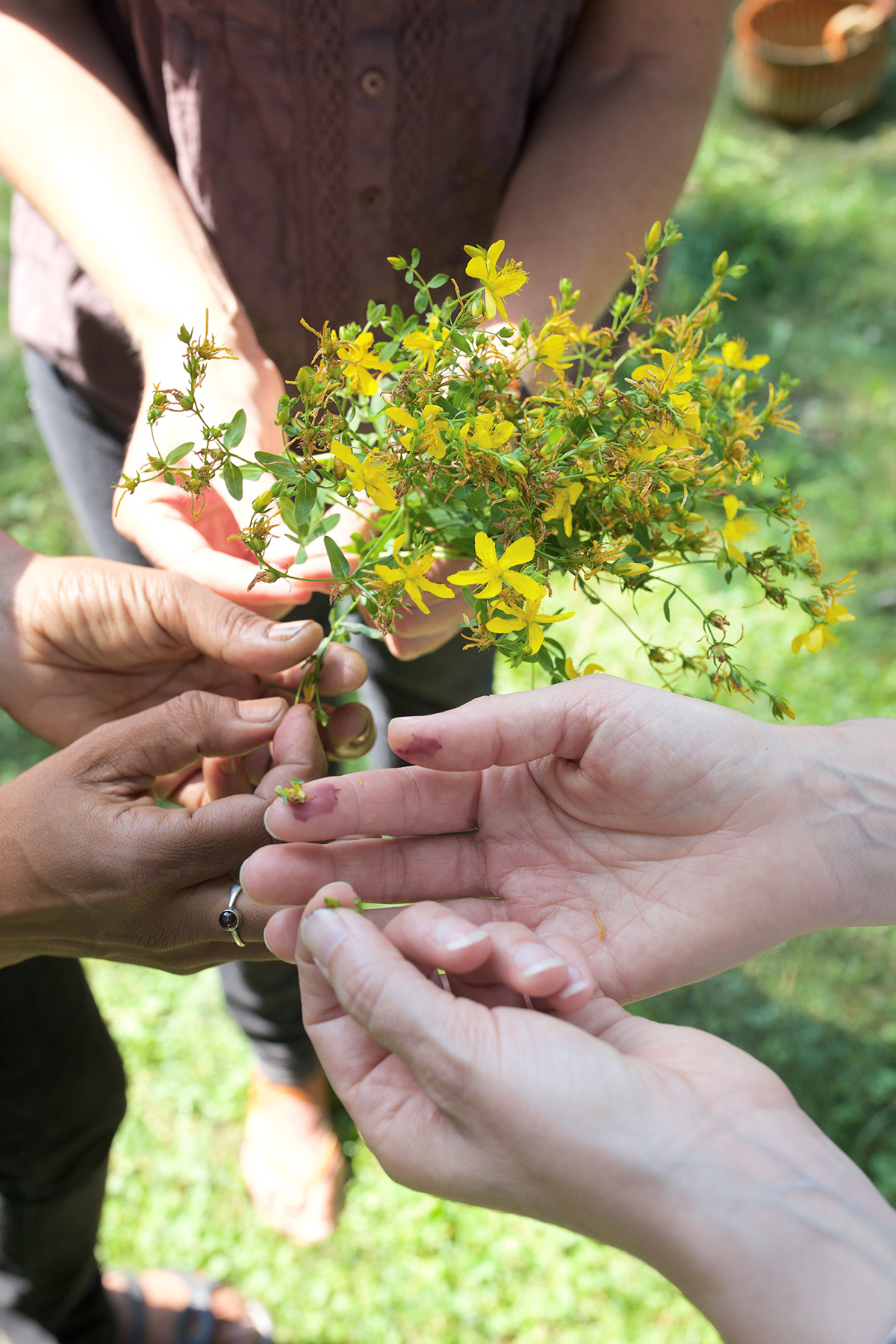
St. John’s wort flowers have five distinct petals with a rose-like stamen. The yellow petals are oval to round, about 1 inch across (Ells, 2011), and the buds or new flowers have a reddish tint.
There are tiny pinhole dots—tiny oil glands—on St. John’s wort leaves as well as on the petals, sepals, and leaf margins (Moore, 2003). These perforations are why Hypericum perforatum gathered its name.
In the Rocky Mountains, there is a native species called Hypericum scouleri. This species is slimmer and a little more delicate than H. perforatum (Wiles, 2018). Harvesting this local species will take more tenderness and care on your part.
Tools for Foraging for St. John’s Wort
When you go out to forage St. John’s wort, you’ll want to make sure you have everything on hand to harvest the plant. With the sun beating down and a long day in the field, I recommend preparing yourself well with water, a thoughtful gift to leave the plant, layers of clothing, sunscreen, and a hat. You’ll also want to have the appropriate harvesting tools.
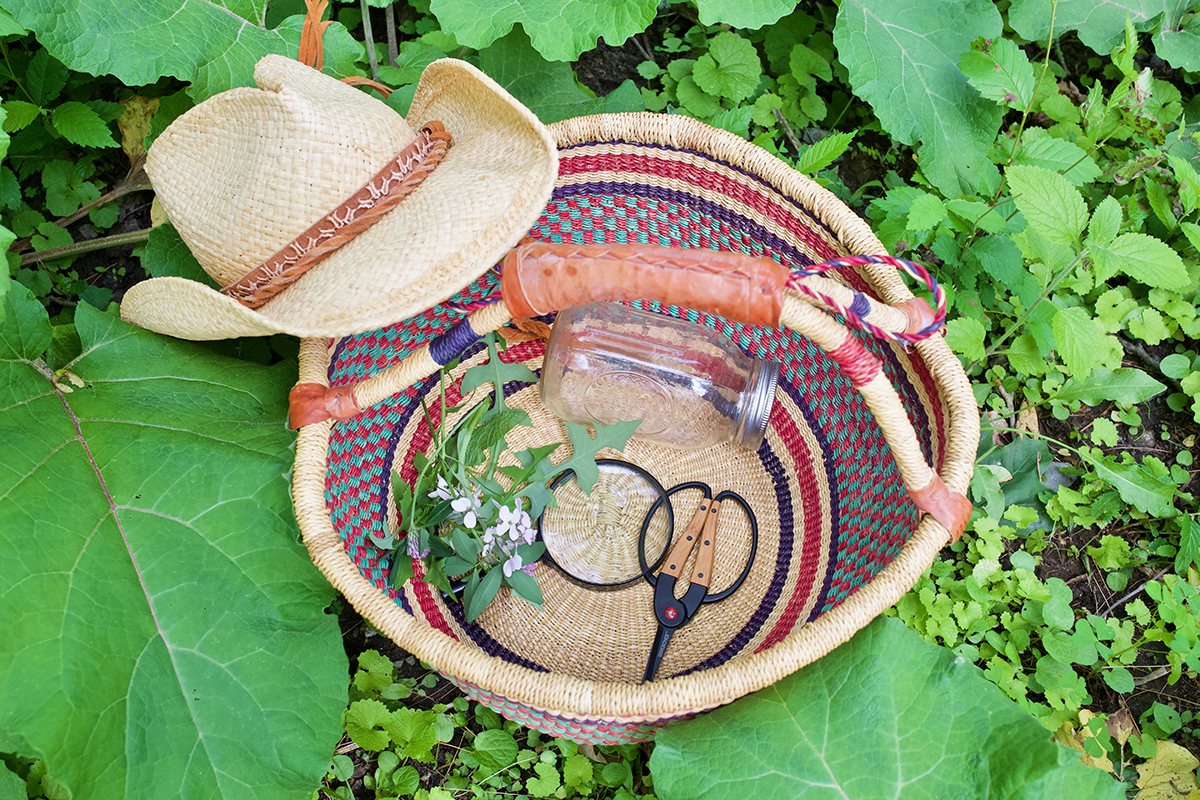
Below are a list of tools and supplies to have with you.
- A sunhat of your choice
- Sunglasses
- A breathable long sleeve top or sunscreen
- A hydration vessel or two (stay hydrated!)
- Botanical keying guide
- Botanical hand lens
- Clamping and dissection tweezers
- A small sickle, pruning shears, or sharp scissors
- A cloth sheet, cotton bag, or jar to collect your fresh St. John’s wort
You can learn more about the tools you’ll need for foraging in our post, 7 Essential Tools For Botany (And A Few More For Good Measure).
Harvesting St. John’s Wort
When you happen upon a stand of St. John’s wort, it’s important to use your intuitive and critical surveying skills. Pause and look around you in all directions. Is there an abundance of St. John’s wort? If not, keep walking. If you observe enough plants so that your harvest won’t compromise the stand, you may begin your harvest.
I would also caution against harvesting from the very first stand you find. I know the excitement of happening upon the plant you have been looking for and feeling a deep desire to make herbal preparations with it, but sometimes, our gut sense and our critical mind can be in opposition. Instead, before you harvest, I suggest sitting with the plant and asking yourself the following questions.
- Will I use the plant material I harvest?
- How will I use it?
- What is my intention for harvesting this generous plant?
Once you’ve asked yourself these questions, if you feel good about harvesting the plant, it’s always reverent to ask the plant if you can harvest some of it. If you don’t feel good about harvesting this particular section of plant, I would trust your gut instinct and search for another stand. I often find that just being with the plant in its habitat offers the support I seek.
To ethically harvest St. John’s wort, take the least amount of plant material as possible. I also recommend coming back to the stand a week later, a month later, and especially next season to see how your harvest affected the plant’s future growth.
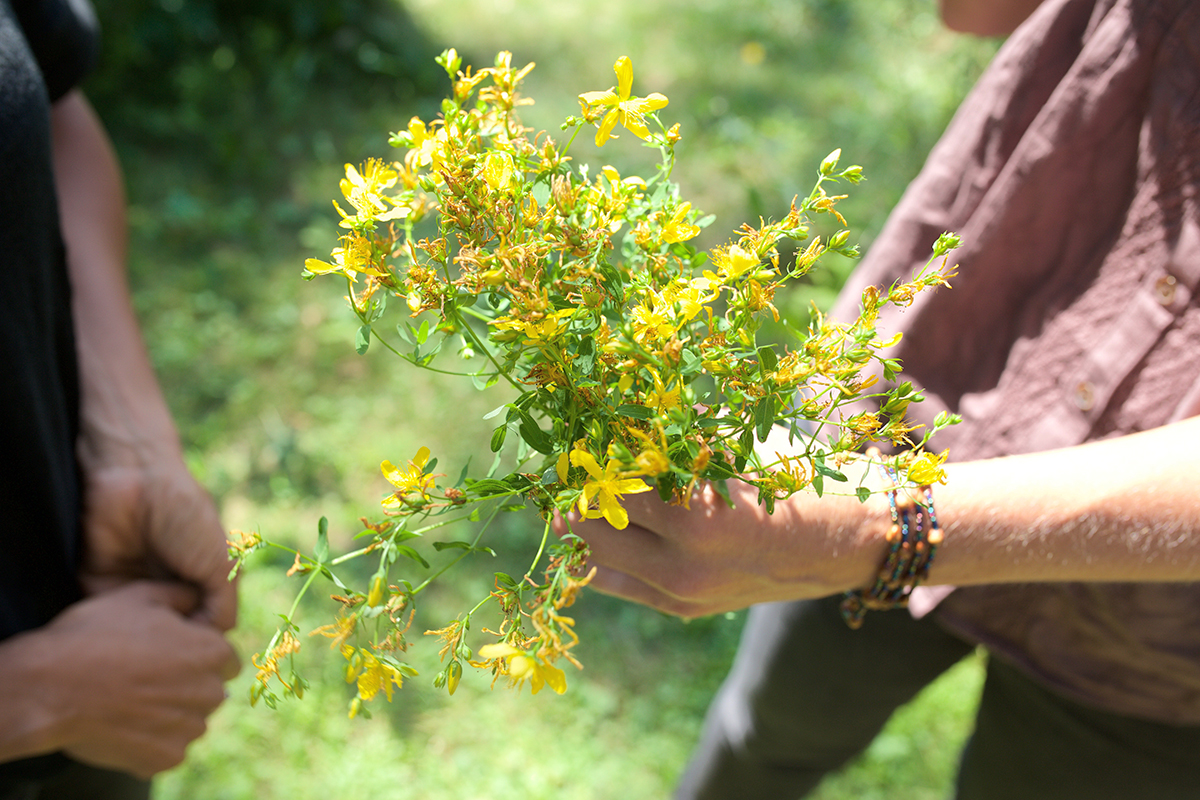
How To Harvest St. John’s Wort
When harvesting St. John’s wort, it’s helpful to harvest on sunny days when the flowers are likely to be dry.
Rosemary Gladstar recommends squeezing the buds and flowers as a test for harvest readiness (Gladstar, 2010). If they emit a reddish or deep purple oil, it’s time to harvest. If they don’t, then it’s not quite time.
The flowers, buds, and sometimes leaves (together known as aerial parts) are what you will harvest. Grab the plant below the sunray of flowers and cut just below your fist. With each cut, the goal is to be intentional about what you’re doing and why. Continually survey the stand as you harvest, making appropriate decisions about how much plant material to collect instead of harvesting mindlessly.
Don’t forget that proper labeling is important when wildcrafting herbs. Make sure to note the date and location of your harvest in a harvesting journal.
As you forage St. John’s wort, it will be warm and the sun will be shining—what a great opportunity to bring you back into the present moment of gathering a plant that will come to your aid in the future.
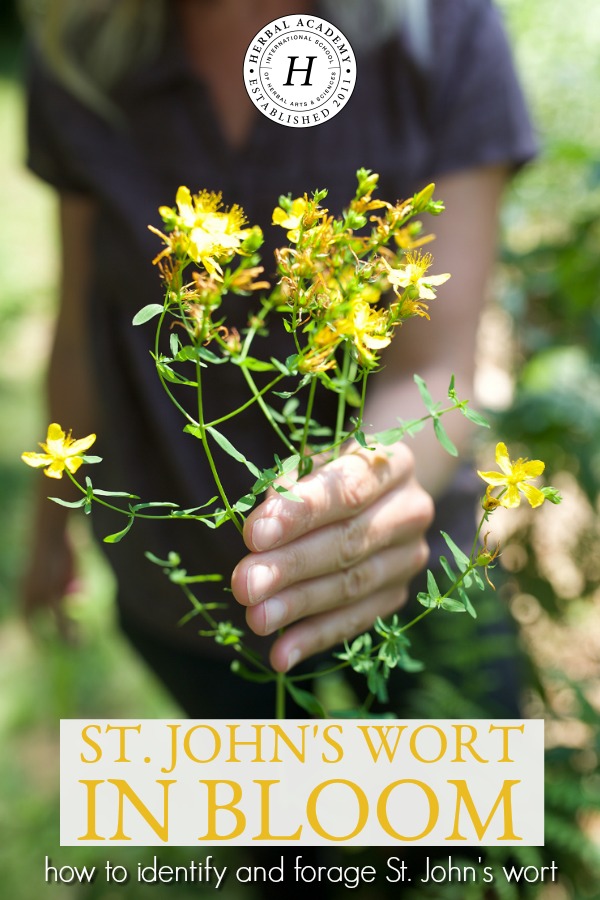
REFERENCES
Gladstar, R. (2012). Medicinal herbs: A beginner’s guide. North Adams, MA: Storey Publishing.
Ells, J. (2011). Rocky mountain flora. Golden, CO: The Colorado Mountain Club Press.
Moore, M. (2003). Medicinal plants of the mountain west. Santa Fe, NM: Museum of New Mexico Press.
Weber, W. (1976). Rocky mountain flora. Niwot, CO: University Press of Colorado.
Wiles, B. (2018). Mountain states medicinal plants: Identify, harvest, and use 100 wild herbs for health and wellness. Portland, OR: Timber Press, Inc.








